
Guests
- Dan Faginauthor of Toms River: A Story of Science and Salvation, for which he won the 2014 Pulitzer Prize for General Non-Fiction. He is an associate professor of journalism and the director of the Science, Health and Environmental Reporting Program at New York University’s Arthur L. Carter Journalism Institute.
Environmental reporter Dan Fagin joins us to discuss his book, “Toms River: A Story of Science and Salvation,” which has just won the Pulitzer Prize for General Non-Fiction. Fagin tells the story of how a small New Jersey town fought back against industrial pollution and astronomical rates of childhood cancer, and ultimately won one of the largest legal settlements in U.S. history. “We don’t look for patterns, we don’t analyze those patterns. That is a terrible tragedy,” Fagin says of the failure to examine environmental and industrial data gathered by local, state and federal agencies. “People are dying because we do not do effective public health surveillance in this country.”
Transcript
NERMEEN SHAIKH: We spend the rest of the hour looking at a fascinating story of a small town ravaged by industrial pollution, a town suffering from astronomical rates of childhood cancers scientifically linked to local air and water pollution, a town that ultimately came together, fought back and won one of the largest legal settlements in the annals of toxic dumping. That town is Toms River in New Jersey, and it’s the focus of a new book that has just won the Pulitzer Prize for General Non-Fiction. In Toms River: A Story of Science and Salvation, environmental reporter Dan Fagin recounts the 60-year saga of rampant pollution and inadequate oversight that makes Toms River a cautionary example for industrial towns, not just in the United States, but also in other countries like China.
Two of the Toms River residents who share their ordeal in the book are Linda Gillick and her son Michael, whose fast-growing tumors decimated his body. This is Linda, followed by Michael, speaking to the show Earth Focus.
LINDA GILLICK: I was 30 when I had Michael. You know, the first 30 years of our lives were carefree, like any young couple, you know, trying to pay your bills, enjoy life and doing things. And then you get a child that has cancer, and your whole life changes completely. It now is surrounded and revolves around your child that is sick.
MICHAEL GILLICK: I was diagnosed with neuroblastoma, which is a cancer of the sympathetic nervous system, and still have effects of it today.
LINDA GILLICK: Michael is alive. He’s a miracle. He’s received the last rites many times. He is 34 years old, has very limited normalcy to his life.
MICHAEL GILLICK: The tumor is pushing my spine pretty much out of my body, like it’s wearing away the skin. It’s also encompassed—like it wraps around, like, all my organs—my heart, lungs, kidneys, all that. And there’s no surgical way to remove it without me either bleeding out on the table or becoming a vegetable, I was told.
LINDA GILLICK: I would buy the powdered Enfamil or Similac, and I would mix it with the tap water. And so, everything that my son got was mixed from the Toms River tap water. I really believe that that’s where his cancer came from.
AMY GOODMAN: That’s Linda and Michael Gillick, two residents of Toms River, New Jersey. Their story is told by our guest, Dan Fagin, in his now Pulitzer Prize-winning book, Toms River: A Story of Science and Salvation. It won the 2014 Pulitzer Prize for General Non-Fiction. You can read an excerpt on our website. Dan Fagin is associate professor of journalism and the director of Science, Health and Environmental Reporting Program at New York University’s Arthur L. Carter Journalism Institute. For 15 years, he was an environmental writer at Newsday.
Dan Fagin, welcome to Democracy Now! Where were you when he heard you won the Pulitzer Prize?
DAN FAGIN: Well, I was at home, actually. I work at home some days. And I was in one room, and my wife, who’s also a journalist, was working in another room. And I had—this is how much of a surprise it was to me: I had even forgotten that it was Pulitzer day, which for a journalist is a big thing to forget. But my wife remembered. She writes for Reuters, and Reuters was up for a prize, that she knew of, so she was checking. And it came over, and she just started shouting, “Dan! Dan! You won! You won!” So it was a—it was a wonderful moment.
AMY GOODMAN: So, your book is Toms River. Talk about why you chose this New Jersey town that most people outside New Jersey probably don’t know about.
DAN FAGIN: Well, for many years, I was the environmental reporter for Newsday, which is a large newspaper, circulates on Long Island and in New York City. And on Long Island, in particular, cancer patterns were a huge issue for our readers, and I was very interested in—what they’re interested in is what I’m interested in. And I thought it was quite fascinating to understand epidemiology, which is a complicated word for a very simple concept, which is patterns of cancer, patterns of disease, and trying to interpret those patterns. It’s like a mystery story. So I wrote a lot about that on Long Island, especially about breast cancer, because that was such a huge issue. But I never really felt like I was getting to the bottom of it, that I was giving readers the kind of core understanding that they needed, also because I felt like the really good science wasn’t being done on Long Island.
But it was being done in this town in New Jersey that I had heard about, Toms River. And I went down there and wrote a story, and I thought it was quite fascinating. I thought the people involved were amazing, including but not limited to the Gillicks, who you just—who your viewers just met, and listeners. And I thought, well, if I ever get a chance to really write—get the time to write a deep book about this fascinating subject of cancer epidemiology, I would look for a great narrative, and a great narrative where also great science was being done. And, well, that was Toms River. So when I went to New York, I finally had that choice—I went to NYU, I finally had that chance.
NERMEEN SHAIKH: And you talked about, in the book, a chemical plant opening in Toms River in 1953. Could you tell us about what that plant was, how it was initially received in Toms River, and how the story unfolded from then?
DAN FAGIN: Sure, sure. So, Toms River was really a town like any other town. It was a sleepy town down on the Jersey Shore. The economy was somewhat moribund. So, when one of the big Swiss chemical companies, Ciba, started looking for a place to relocate their operations—they had gotten into some trouble, environmental trouble, pollution and also—
NERMEEN SHAIKH: Where?
DAN FAGIN: In Cincinnati, Ohio, and previously in Basel, their original hometown. I sort of trace that historical—
NERMEEN SHAIKH: In Switzerland.
DAN FAGIN: In Switzerland, yeah. I trace that evolution over time. Basically everywhere they went, they eventually became a most unwelcome neighbor. But when they came to Toms River, initially everyone was thrilled, because this was going to be, or it was, ultimately, one of the largest dye manufacturing plants in the country, one of the larger ones in the world. And then it eventually expanded from dyes into plastics and other chemical products. And for many years, it was the most important employer in Ocean County. And they weren’t—wasn’t just that there were a lot of jobs; they were well-paying jobs, good blue-collar jobs. So, in some ways, it was a real agent for social mobility—as long as people didn’t think too hard about the long-term consequences. There was a lot of short-term thinking versus coming to grips with the long term.
NERMEEN SHAIKH: So, Ciba manufactured dye. Could you talk about—which you do in the book—what are some of the dangers associated with dye manufacturing which leads to these to chemical pollutants, etc.?
DAN FAGIN: Right. Well, it turns out that dyes are fascinating to look at for a couple of reasons, the first of which is that all of the big chemical companies that we know and love—starting with BASF, the largest chemical company in the world, still around; Ciba; Sandoz; so many—GAF—so many of the big chemical companies started out by manufacturing dyes, which was really the first great product of the chemical age, starting in the 1850s. On the other hand, the thing about making dyes is that it generates a tremendous amount of hazardous waste. I mean, a lot. In Toms River, I was able to show that it actually generated much more waste than usable product. And all that product had to go somewhere. And traditionally, where they put it was either in the ground or into the water. And that’s exactly what they did in Toms River, too.
AMY GOODMAN: I mean, this is truly an astounding story, and it’s the residents that played a key role in uncovering what was going on. I wanted to turn back to Link TV’s Earth Focus, that did this story, to Toms River resident Linda Gillick describing the effort she made to uncover the reason why her son Michael and so many other children in the area were getting cancer.
LINDA GILLICK: I put up a map of the whole county so that we could see where our children were located for our caseworkers. And as the years went on, we noticed that Toms River had become one big dark area full of pins. It was a big concern. And I did reach out to the state health department numerous times and told them of my concerns, and was told over and over again that there was not a problem.
AMY GOODMAN: That was Linda Gillick describing this effort she made to find out what was going on. Tell us about Linda and her son Michael.
DAN FAGIN: Linda’s a fascinating person and a very brave one and, most of all, an extremely determined person. And she was always a very sort of community-minded person. She was involved. She was a schoolteacher and was, you know, the kind of person who had a network of friends and always wanted to know what was going on. And her life changed in a horrible way when Michael was diagnosed with neuroblastoma at three months. And at that time, neuroblastoma was just a terrible diagnosis. And they told Linda that it was less than 50-50 that Michael would reach his first birthday. And, I mean, the Gillicks were so traumatized that they did things like celebrate his first birthday at six months, because they were afraid he wouldn’t actually reach his first birthday. And they actually purchased a coffin for Michael, because if the time came, they didn’t want to have to make that horrible—you know, go through that horrible process. So, it was just the most horrible situation that you could possibly imagine.
And many people, quite understandably, would have turned inward with their grief. But that is not Linda’s way. And what happened was, she would go with Michael to Sloan Kettering or New York Hospital up in New York or to the Children’s Hospital of Philadelphia in Philadelphia and get treatment, because Toms River was not yet large enough to have advanced cancer treatment, although there is now. And wherever she would go, she would bump in—it felt like to her that she would bump into other parents and kids from Toms River. And she was the kind of person that started keeping track. And it eventually got to the point where, as your viewers and listeners just saw and heard, she made a map. And this is the kind of thing that happens sometimes, not just in Toms River, but in Woburn, Massachusetts, which people may be familiar with, you know, from the movie and book Civil Action that John Travolta was in. But it’s not just there. Many places, citizen activists start keeping track of cases. In Linda’s case, she was not able to get the attention of the authorities. They told her, “Sorry, we don’t think there’s anything there.” Things changed only later, thanks to a whole sort of strange series of events, centering on a nurse at the Children’s Hospital of Philadelphia.
AMY GOODMAN: Who?
DAN FAGIN: What she did—her name is Lisa Boornazian. And she was a—at the time, was a young nurse in the pediatric oncology ward. And she, too, as with Linda Gillick, had noticed that there were a lot of people coming to CHOP, as that hospital is called, from Toms River. And that was really strange, because the Children’s Hospital of Philadelphia is a very famous institution, it attracts children from all over the world, and certainly from all over the region, the Mid-Atlantic region, so why should there be so many kids from Toms River? And that really bothered her. That bothered Lisa. She said something to the doctors. The doctors said, “You know, just—you’re a nurse. Go back to being a nurse. You really—you really don’t know what you’re talking about here. It’s probably just a coincidence.” But it really bothered Lisa.
You know, the thing is that when you’re a nurse, a dedicated nurse like Lisa, you really get to know the families and their parents. You spend those long shifts overnight. And when a child dies, you go to the funeral. And she went to a number of funerals in Toms River. And every time she went, she would drive past the chemical plant and say, “Oh, that’s that place that the families were telling me about.” So what happened was that it turned out that Lisa’s sister-in-law worked at the EPA. And she was talking to her sister-in-law about this, and her sister-in-law happened to know who to contact within the federal government to try to get something going. And then that person, in turn, contacted the state health department, which said, “OK, we’re actually going to take a look at this.” Even that was not the end, because the state health department tried to keep that initial assessment secret.
AMY GOODMAN: That’s the New Jersey State Department of Health.
DAN FAGIN: Correct.
AMY GOODMAN: We’re going to continue with this story after break. Dan Fagin is the newly—new winner of the Pulitzer Prize for General Non-Fiction for his book, Toms River: A Story of Science and Salvation. We’re talking about the Ciba-Geigy dye plant outside Toms River. We’ll also learn about what Union Carbide had to do with this. Stay with us.
[break]
AMY GOODMAN: This is Democracy Now!, democracynow.org, The War and Peace Report. I’m Amy Goodman, with Nermeen Shaikh. Our guest is Dan Fagin. He is author of Toms River: A Story of Science and Salvation. He has just won the 2014 Pulitzer Prize for General Non-Fiction. So you told us about the Ciba-Geigy plant. You told us about all the children who were sick in Toms River, getting cancer. What about Union Carbide?
DAN FAGIN: Right. Well, I want to make sure everybody knows that this story is about a lot more than just the chemical plant. And that is, another phenomenon that was happening in New Jersey and other places around the country at that time, in the '60s and ’70s, was illegal dumping, that chemical companies were looking for cheap ways to get rid of their waste, and they often used intermediaries to get rid of their waste, so they wouldn't—so their hands wouldn’t be on it. And that’s what happened in this case. Union Carbide had thousands of barrels from its plant in Bound Brook, New Jersey, that it wanted to get rid of. It didn’t want to spend the money to dispose of the waste properly, so it engaged with a contractor, a very disreputable guy, who ultimately took those barrels and dumped them in the back of a chicken farm.
AMY GOODMAN: Thousands of barrels.
DAN FAGIN: Thousands of barrels. And he—he was so overwhelmed by the work that he would just throw them off the side of his truck, and they would burst on the sandy soil.
NERMEEN SHAIKH: And when was this, Dan, and over how long a period?
DAN FAGIN: It was actually over a period of just a few months, but the damage was done. It was in the early '70s. But the damage was done. And a whole ’nother area of groundwater contamination—there was the—there was the groundwater contamination from the chemical plant, which contaminated one set of wells in the ’60s. There was a whole ’nother area of groundwater contamination caused by this illegal dumping. And I should say, too, that the town's thirst for growth played into this, because they kept drilling wells frantically and pumping those wells beyond their capacity. And what they essentially did was slurped up that contamination and distributed it throughout the town, because they were pumping those wells so hard. So that’s what happened.
And ultimately, you know, to sort of tie it back to what was happening with Linda Gillick and other folks in town who thought that there were many kids who were getting cancer, Linda made her map, and she thought that it was something in the water. And she got the state to finally—Lisa Boornazian, the nurse at the Children’s Hospital of Philadelphia, got the state to look into this. But the state did a very sort of primitive calculation that said, “OK, is there more childhood cancer there than we would expect?” And it turns out, yeah, there was a lot more childhood cancer than would be expected based on the demographics of New Jersey. But the state health department didn’t know what to do with that information. They didn’t want to do a full-blown investigation. They thought that would scare people. It would be expensive. So they didn’t. They kept it quiet. But Linda Gillick and other people found out. And there was a huge story in the Newark Star-Ledger in 1996, and then all hell broke loose. And eventually, a serious piece of environmental epidemiology, a case-control study, was done, and it concluded that there were indeed relationships between environmental exposures in town and unusually high rates of childhood cancer. And that’s a very unusual thing to be able to—to be able to make—draw that relationship.
AMY GOODMAN: So talk about how the families banded together and sued.
DAN FAGIN: They didn’t actually sue. It was quite fascinating. I mentioned A Civil Action earlier. So, if anybody’s read or watched A Civil Action, you know that the star of that is a guy named Jan Schlichtmann, an attorney, is quite a character. And he basically lost his shirt, his suit, all of his money, everything he had, pursuing that case in Woburn, Massachusetts. He didn’t want to make that mistake again. He didn’t want to have total warfare. He wanted to initiate a kind of a negotiation, out-of-court negotiation. And he was joined in that by some very able attorneys in Philadelphia: Mark Cuker, Esther Berezofsky and others. And they initiated a very unusual out-of-court process that ended with a settlement, a value—we don’t know the exact amount, but it was certainly over $30 million, well over $30 million, that was divided among 69 families. But the companies, of course, did not admit any kind of liability, because they don’t do that.
AMY GOODMAN: But you’re saying around $30 million, divided by around 70 families. You’re talking about maybe half-a-million dollars for families, some of that much less—of course lawyers get money.
DAN FAGIN: Correct. That’s exactly right. It would be hard to say that those families got what was appropriate, considering what they had gone through.
AMY GOODMAN: How many children died?
DAN FAGIN: You know, it really depends on how you define the cluster, over time and space. But, you know, you could say as many as 40 or 50 died. Out of the 69, a smaller number, but if you define the—
AMY GOODMAN: And adults?
DAN FAGIN: One of the amazing things and sad things about Toms River is that nobody ever really took a comprehensive look at adult cancer. I mean, that’s the big picture here that, you know, maybe we could talk about for a few minutes. And that is, it’s just as matter of luck that we know what happened in Toms River. It was a very flukey series of decisions and individual acts of bravery that got us to the point where we were able to get a decent epidemiological study done. Most of the time, we have no idea.
And that’s the bigger point that I wanted to try to make, and that is that we don’t really do public health surveillance effectively in this country. You know, we spend $80 billion-plus, the intelligence agencies—that’s just the disclosed budget; it doesn’t count the undisclosed budget—and they’re doing data analysis all the time, allegedly to protect us, you know, from bad guys. We don’t—we collect a tremendous amount of environmental and public health data, and we do nothing with it—almost nothing with it. We don’t look for patterns. We don’t analyze those patterns. And that is a terrible tragedy, where people are dying because we do not do effective public health surveillance in this country. And we’re operating on laws that are 50 years old. We’re using science that is almost always conducted by people with the greatest ax to grind—regulatory science, which is conducted either by the chemical companies themselves or the contractors they hire. We’ve got some real systemic problems here, and that was a big reason why I wrote this book.
AMY GOODMAN: We wanted to go back to Michael. He’s in his thirties now.
DAN FAGIN: Yes. He beat the odds.
AMY GOODMAN: It’s astounding, since he had cancer since three months. The tumors in his body are pushing his spine through his skin. They are wrapped around all of his organs, as he describes it. This is Michael Gillick, again, born in 1979 with neuroblastoma, but talking about not so much himself, but what it means when people come together.
MICHAEL GILLICK: No corporation, no politician is bigger than a combined voice of people. When people join together and form their voices into one loud “We’re not going to stand for this,” there’s no standing up against that.
AMY GOODMAN: That was Michael Gillick, with hope here. Dan Fagin, what most surprised you in writing this book, Toms River?
DAN FAGIN: I think two things surprised me. Number one, even though I’ve been an environmental reporter for, you know, 25-plus years, I was surprised at the brazenness of the behavior of the companies involved, you know, as late as the '90s, knowing about exposures and responding very inadequately to those. And the second thing is really what Michael was talking about, and that is that I—it's wonderful, and somewhat surprising, although we shouldn’t be surprised, to see a community of people sort of rise to the occasion. And it took a while for that to happen in Toms River, but it did happen. It did happen. And it’s quite inspiring the way that that story unfolded.
AMY GOODMAN: Well, we want to thank you for being with us, Dan Fagin, author of Toms River: A Story of Science and Salvation. And again, congratulations for winning the 2014 Pulitzer Prize for General Non-Fiction. You can read an excerpt from his book on our website at democracynow.org. He now teaches at New York University Arthur L. Carter Journalism Institute.

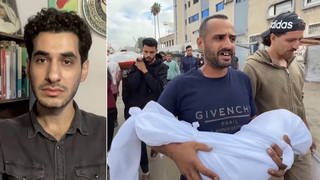
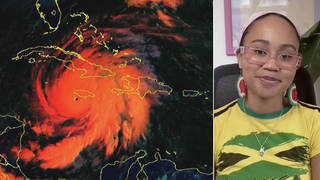
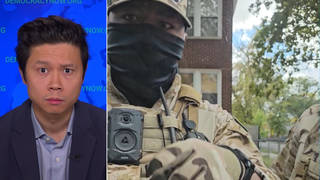
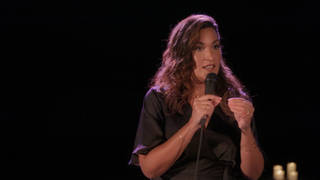





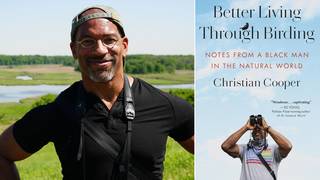
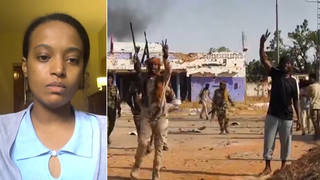
Media Options